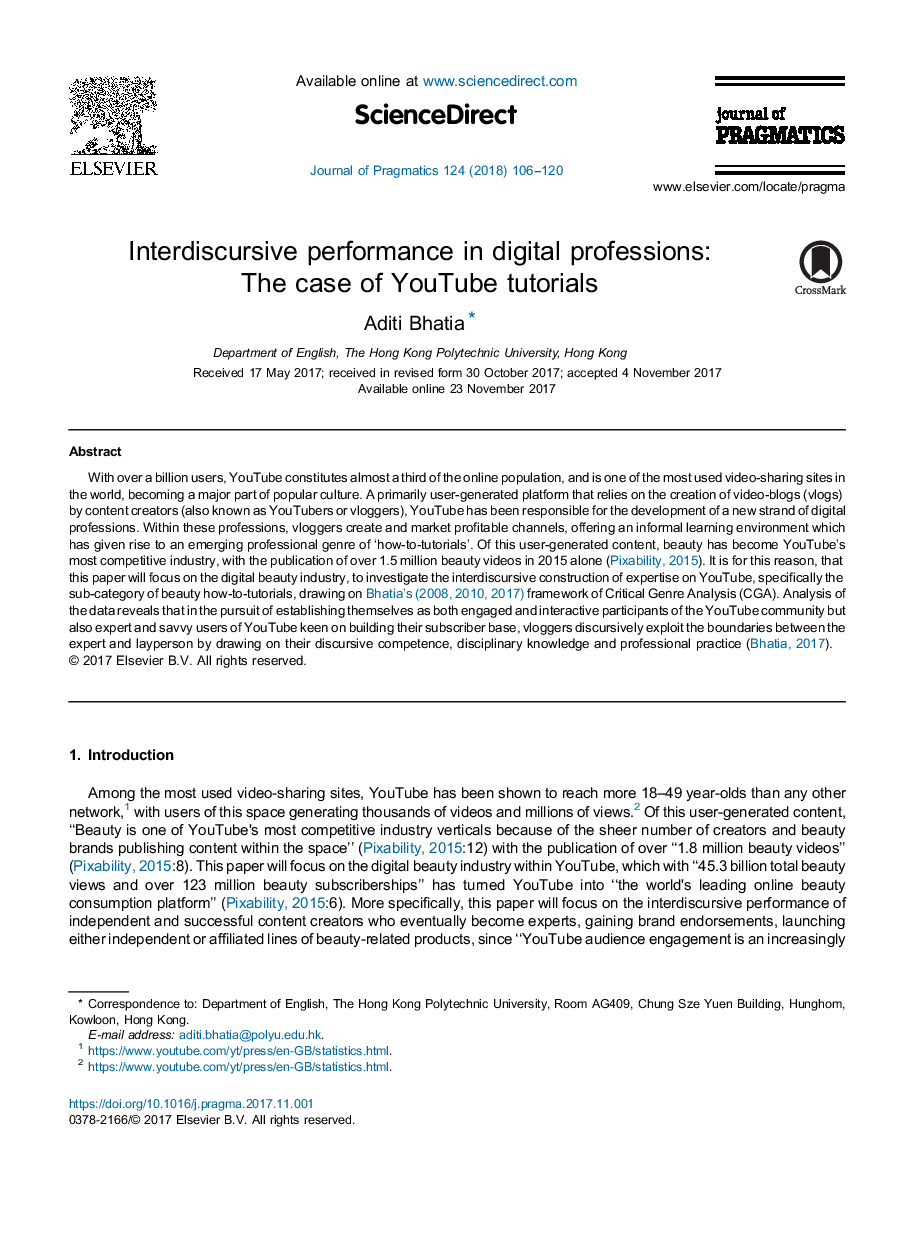| Article ID | Journal | Published Year | Pages | File Type |
|---|---|---|---|---|
| 7297614 | Journal of Pragmatics | 2018 | 15 Pages |
Abstract
With over a billion users, YouTube constitutes almost a third of the online population, and is one of the most used video-sharing sites in the world, becoming a major part of popular culture. A primarily user-generated platform that relies on the creation of video-blogs (vlogs) by content creators (also known as YouTubers or vloggers), YouTube has been responsible for the development of a new strand of digital professions. Within these professions, vloggers create and market profitable channels, offering an informal learning environment which has given rise to an emerging professional genre of 'how-to-tutorials'. Of this user-generated content, beauty has become YouTube's most competitive industry, with the publication of over 1.5 million beauty videos in 2015 alone (Pixability, 2015). It is for this reason, that this paper will focus on the digital beauty industry, to investigate the interdiscursive construction of expertise on YouTube, specifically the sub-category of beauty how-to-tutorials, drawing on Bhatia, 2008, Bhatia, 2010, Bhatia, 2017 framework of Critical Genre Analysis (CGA). Analysis of the data reveals that in the pursuit of establishing themselves as both engaged and interactive participants of the YouTube community but also expert and savvy users of YouTube keen on building their subscriber base, vloggers discursively exploit the boundaries between the expert and layperson by drawing on their discursive competence, disciplinary knowledge and professional practice (Bhatia, 2017).
Related Topics
Social Sciences and Humanities
Arts and Humanities
Language and Linguistics
Authors
Aditi Bhatia,
